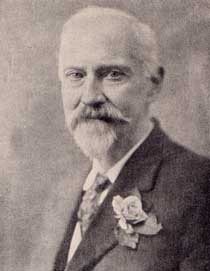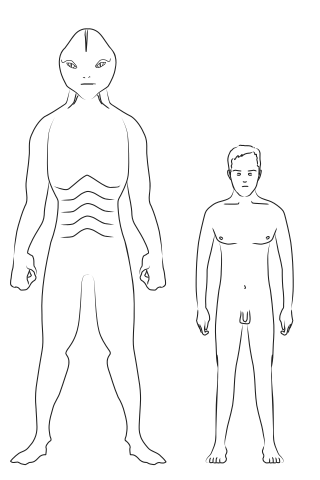Related Research Articles

A grimoire is a textbook of magic, typically including instructions on how to create magical objects like talismans and amulets, how to perform magical spells, charms, and divination, and how to summon or invoke supernatural entities such as angels, spirits, deities, and demons. In many cases, the books themselves are believed to be imbued with magical powers. The only contents found in a grimoire would be information on spells, rituals, the preparation of magical tools, and lists of ingredients and their magical correspondences. In this manner, while all books on magic could be thought of as grimoires, not all magical books should be thought of as grimoires.

Hermes Trismegistus is a legendary Hellenistic period figure that originated as a syncretic combination of the Greek god Hermes and the Egyptian god Thoth. He is the purported author of the Hermetica, a widely diverse series of ancient and medieval pseudepigraphica that laid the basis of various philosophical systems known as Hermeticism.

Thoth is an ancient Egyptian deity. In art, he was often depicted as a man with the head of an ibis or a baboon, animals sacred to him. His feminine counterpart was Seshat, and his wife was Ma'at. He was the god of the Moon, wisdom, knowledge, writing, hieroglyphs, science, magic, art and judgment.

Hermeticism, or Hermetism, is a philosophical and religious tradition rooted in the teachings attributed to Hermes Trismegistus, a syncretic figure combining elements of the Greek god Hermes and the Egyptian god Thoth. This system encompasses a wide range of esoteric knowledge, including aspects of alchemy, astrology, and theurgy, and has significantly influenced various mystical and occult traditions throughout history. The writings attributed to Hermes Trismegistus, often referred to as the Hermetica, were produced over a period spanning many centuries and may be very different in content and scope.

The Hermetica are texts attributed to the legendary Hellenistic figure Hermes Trismegistus, a syncretic combination of the Greek god Hermes and the Egyptian god Thoth. These texts may vary widely in content and purpose, but by modern convention are usually subdivided into two main categories, the "technical" and "religio-philosophical" Hermetica.
Book of Thoth is a name given to many ancient Egyptian texts supposed to have been written by Thoth, the Egyptian god of writing and knowledge. They include many texts that were claimed to exist by ancient authors and a magical book that appears in an Egyptian work of fiction.
The Emerald Tablet, the Smaragdine Table, or the Tabula Smaragdina is a compact and cryptic Hermetic text. It was a highly regarded foundational text for many Islamic and European alchemists. Though attributed to the legendary Hellenistic figure Hermes Trismegistus, the text of the Emerald Tablet first appears in a number of early medieval Arabic sources, the oldest of which dates to the late eighth or early ninth century. It was translated into Latin several times in the twelfth and thirteenth centuries. Numerous interpretations and commentaries followed.

James Churchward was a British writer, inventor, engineer, and fisherman.

Manly Palmer Hall was a Canadian author, lecturer, astrologer and mystic. Over his 70-year career he gave thousands of lectures and published over 150 volumes, of which the best known is The Secret Teachings of All Ages (1928). In 1934 he founded the Philosophical Research Society in Los Angeles.

The Book of Dzyan is a reputedly ancient text of Tibetan origin. The Stanzas formed the basis for The Secret Doctrine (1888), one of the foundational works of the theosophical movement, by Helena Petrovna Blavatsky. The book has influenced writers in the ancient astronaut, occult and UFO communities. Historians and skeptics have dismissed the Book of Dzyan as a hoax and have accused Blavatsky of plagiarism.
De Vermis Mysteriis, or Mysteries of the Worm, is a fictional grimoire created by Robert Bloch and incorporated by H. P. Lovecraft into the lore of the Cthulhu Mythos.

The Morning of the Magicians: Introduction to Fantastic Realism is a 1960 book by the journalists Louis Pauwels and Jacques Bergier. As the authors disclaim in their preface, the book is intended to challenge readers' viewpoints on historic events, whether they believe the explanations or not, but with the goal to give readers the opportunity to test their level of cognitive dissonance and critical thinking skills. Although the book presents a collection of "raw material for speculation of the most outlandish order," the same reviewer also noted "it is the instigation of original thought that matters." It covers topics like cryptohistory, ufology, occultism in Nazism, alchemy, spiritual philosophy and Die Glocke, and is thus often referenced by conspiracy-theory enthusiasts.

Tarot card reading is a form of cartomancy whereby practitioners use tarot cards to purportedly gain insight into the past, present or future. They formulate a question, then draw cards to interpret them for this end. A traditional tarot deck consists of 78 cards, which can be split into two groups, the Major Arcana and Minor Arcana. French-suited playing cards can also be used; as can any card system with suits assigned to identifiable elements.

A Culture of Conspiracy: Apocalyptic Visions in Contemporary America is a 2003 non-fiction book written by Michael Barkun, professor emeritus of political science at the Maxwell School of Citizenship and Public Affairs.
Serpent Men are a fictional race created by Robert E. Howard for his King Kull tales. They first appeared in "The Shadow Kingdom", published in Weird Tales in August 1929.

Reptilians are supposed reptilian humanoids, which play a prominent role in fantasy, science fiction, ufology, and conspiracy theories. The idea of reptilians was popularised by David Icke, an anti-semitic conspiracy theorist who claims shapeshifting reptilian aliens control Earth by taking on human form and gaining political power to manipulate human societies. Icke has stated on multiple occasions that many world leaders are, or are possessed by, so-called reptilians.

Murry Hope was an English writer and occultist. Considered a Wiccan priestess and a New Age author, she wrote sundry books on the topics of psychology, human consciousness, the future of planet Earth, witchcraft, the Sirius star system, et al.
John Michael Greer is an American writer and druid who writes on ecological overshoot, ecological economics, appropriate technology, oil depletion, societal collapse, ecocentrism, pantheism, and the occult.
Maurice Doreal (1898–1963), born Claude Doggins, was an American occultist and founder of the Brotherhood of the White Temple.
References
- 1 2 Card 2019, p. 26-27.
- ↑ Barkun 2003, p. 115.
- ↑ Partridge 2014, p. 705.
- ↑ Doreal, Maurice (1930). The Emerald Tablets Of Thoth The Atlantean.
- ↑ Barkun 2003, p. 120.
Works cited
- Barkun, Michael (2003). A Culture of Conspiracy: Apocalyptic Visions in Contemporary America. University of California Press. ISBN 9780520248120.
- Card, Jeb J. (2019). "Older than brooding Egypt or the contemplative Sphinx': Egypt and the Mythic Past in Alternative Egyptology and the Fiction of H. P. Lovecraft" (PDF). Journal of History and Cultures. 10: 22–44. Archived from the original (PDF) on 2024-03-24.
- Partridge, Christopher (2014). The Occult World. Routledge. ISBN 9781317596769.